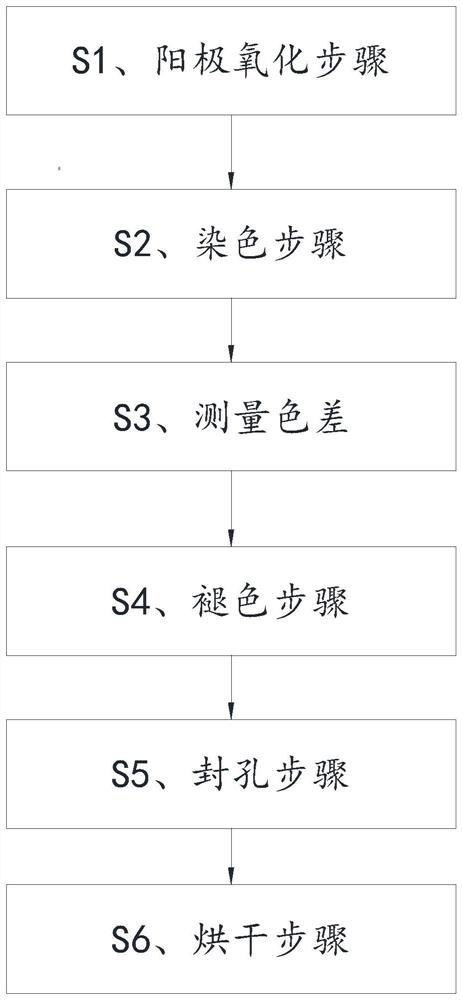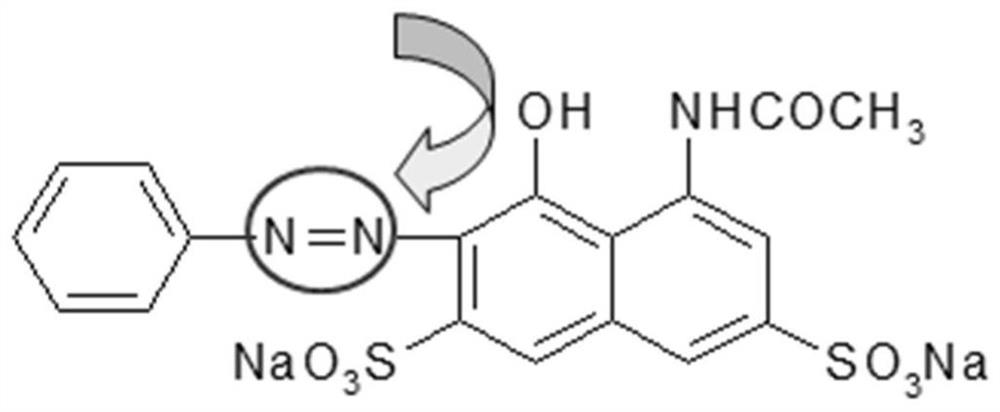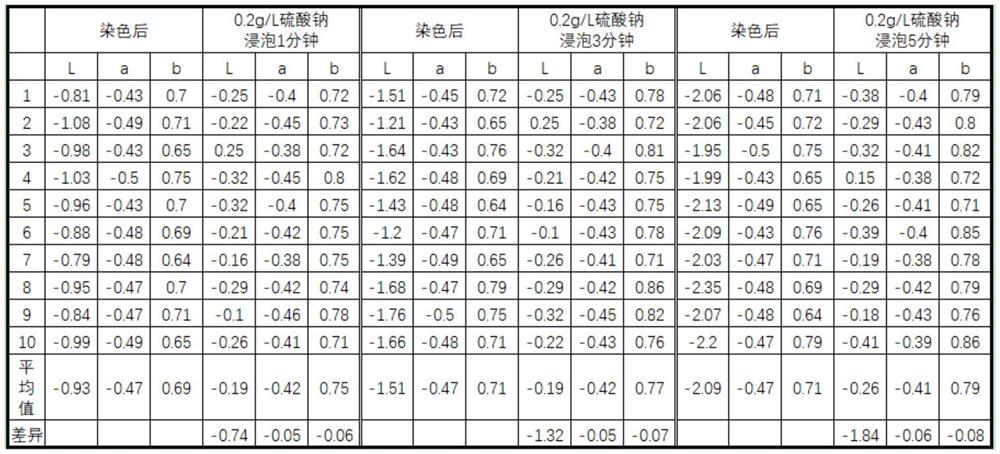Anodic oxidation dyeing process
A technology of anodic oxidation and anodic oxidation film, which is applied in the direction of anodic oxidation, electrolytic coating, surface reaction electrolytic coating, etc. It can solve the problems that the color cannot be too light, the color depth cannot be too deep, and cannot meet the design requirements, etc., to achieve the process method Simple, anti-corrosion effect
- Summary
- Abstract
- Description
- Claims
- Application Information
AI Technical Summary
Problems solved by technology
Method used
Image
Examples
Embodiment 1
[0028] Embodiment 1: the anodic oxidation dyeing process of the present embodiment comprises the following steps:
[0029] S1, anodizing steps:
[0030] S1.1. Hanging the workpiece: place the workpiece to be dyed in the jig, and hang the jig in the hanger, and the workpiece is an aluminum product. First, soak the workpiece in a degreasing tank containing a degreasing agent at room temperature, and soak it in the degreasing agent for 180 seconds at 50°C. Among them, according to the mass percentage, the degreasing agent contains 35% organic sodium salt, 9% corrosion inhibitor and 12% complexing agent, wherein the organic sodium salt is sodium citrate, and the corrosion inhibitor is Ethylene glycol, and the complexing agent is sodium pyrophosphate.
[0031] S1.2. One-time washing: at room temperature, soak the degreasing workpiece in a washing tank containing water for 20 seconds, and then immerse the workpiece in a mixture of nitric acid and film remover at room temperature. ...
PUM
| Property | Measurement | Unit |
|---|---|---|
| concentration | aaaaa | aaaaa |
| concentration | aaaaa | aaaaa |
| concentration | aaaaa | aaaaa |
Abstract
Description
Claims
Application Information
 Login to View More
Login to View More - R&D
- Intellectual Property
- Life Sciences
- Materials
- Tech Scout
- Unparalleled Data Quality
- Higher Quality Content
- 60% Fewer Hallucinations
Browse by: Latest US Patents, China's latest patents, Technical Efficacy Thesaurus, Application Domain, Technology Topic, Popular Technical Reports.
© 2025 PatSnap. All rights reserved.Legal|Privacy policy|Modern Slavery Act Transparency Statement|Sitemap|About US| Contact US: help@patsnap.com



